- Home
- L. Frank Baum
The Santa Claus Stories Page 9
The Santa Claus Stories Read online
Page 9
And at last they discovered the cave where the toys had been heaped up by the wicked Awgwas.
It did not take them long to burst open the mouth of the cave, and then each one seized as many toys as he could carry and they all flew to Claus and laid the treasure before him.
The good man was rejoiced to receive, just in the nick of time, such a store of playthings with which to load his sledge, and he sent word to Glossie and Flossie to be ready for the journey at nightfall.
With all his other labors he had managed to find time, since the last trip, to repair the harness and to strengthen his sledge, so that when the deer came to him at twilight he had no difficulty in harnessing them.
“We must go in another direction to-night,” he told them, “where we shall find children I have never yet visited. And we must travel fast and work quickly, for my sack is full of toys and running over the brim!”
So, just as the moon arose, they dashed out of the Laughing Valley and across the plain and over the hills to the south. The air was sharp and frosty and the starlight touched the snowflakes and made them glitter like countless diamonds. The reindeer leaped onward with strong, steady bounds, and Claus’ heart was so light and merry that he laughed and sang while the wind whistled past his ears:
“With a ho, ho, ho!
And a ha, ha, ha!
And a ho, ho! ha, ha, hee!
Now away we go
O’er the frozen snow,
As merry as we can be!”
Jack Frost heard him and came racing up with his nippers, but when he saw it was Claus he laughed and turned away again.
The mother owls heard him as he passed near a wood and stuck their heads out of the hollow places in the tree-trunks; but when they saw who it was they whispered to the owlets nestling near them that it was only Santa Claus carrying toys to the children. It is strange how much those mother owls know.
Claus stopped at some of the scattered farmhouses and climbed down the chimneys to leave presents for the babies. Soon after he reached a village and worked merrily for an hour distributing playthings among the sleeping little ones. Then away again he went, signing his joyous carol:
“Now away we go
O’er the gleaming snow,
While the deer run swift and free!
For to girls and boys
We carry the toys
That will fill their hearts with glee!”
The deer liked the sound of his deep bass voice and kept time to the song with their hoofbeats on the hard snow; but soon they stopped at another chimney and Santa Claus, with sparkling eyes and face brushed red by the wind, climbed down its smoky sides and left a present for every child the house contained.
It was a merry, happy night. Swiftly the deer ran, and busily their driver worked to scatter his gifts among the sleeping children.
But the sack was empty at last, and the sledge headed homeward; and now again the race with daybreak began. Glossie and Flossie had no mind to be rebuked a second time for tardiness, so they fled with a swiftness that enabled them to pass the gale on which the Frost King rode, and soon brought them to the Laughing Valley.
It is true when Claus released his steeds from their harness the eastern sky was streaked with gray, but Glossie and Flossie were deep in the Forest before day fairly broke.
Claus was so wearied with his night’s work that he threw himself upon his bed and fell into a deep slumber, and while he slept the Christmas sun appeared in the sky and shone upon hundreds of happy homes where the sound of childish laughter proclaimed that Santa Claus had made them a visit.
God bless him! It was his first Christmas Eve, and for hundreds of years since then he has nobly fulfilled his mission to bring happiness to the hearts of little children.
When you remember that no child, until Santa Claus began his travels, had ever known the pleasure of possessing a toy, you will understand how joy crept into the homes of those who had been favored with a visit from the good man, and how they talked of him day by day in loving tones and were honestly grateful for his kindly deeds. It is true that great warriors and mighty kings and clever scholars of that day were often spoken of by the people; but no one of them was so greatly beloved as Santa Claus, because none other was so unselfish as to devote himself to making others happy. For a generous deed lives longer than a great battle or a king’s decree of a scholar’s essay, because it spreads and leaves its mark on all nature and endures through many generations.
The bargain made with the Knook Prince changed the plans of Claus for all future time; for, being able to use the reindeer on but one night of each year, he decided to devote all the other days to the manufacture of playthings, and on Christmas Eve to carry them to the children of the world.
But a year’s work would, he knew, result in a vast accumulation of toys, so he resolved to build a new sledge that would be larger and stronger and better-fitted for swift travel than the old and clumsy one.
His first act was to visit the Gnome King, with whom he made a bargain to exchange three drums, a trumpet and two dolls for a pair of fine steel runners, curled beautifully at the ends. For the Gnome King had children of his own, who, living in the hollows under the earth, in mines and caverns, needed something to amuse them.
In three days the steel runners were ready, and when Claus brought the playthings to the Gnome King, his Majesty was so greatly pleased with them that he presented Claus with a string of sweet-toned sleigh-bells, in addition to the runners.
“These will please Glossie and Flossie,” said Claus, as he jingled the bells and listened to their merry sound. “But I should have two strings of bells, one for each deer.”
“Bring me another trumpet and a toy cat,” replied the King, “and you shall have a second string of bells like the first.”
“It is a bargain!” cried Claus, and he went home again for the toys.
The new sledge was carefully built, the Knooks bringing plenty of strong but thin boards to use in its construction. Claus made a high, rounding dash-board to keep off the snow cast behind by the fleet hoofs of the deer; and he made high sides to the platform so that many toys could be carried, and finally he mounted the sledge upon the slender steel runners made by the Gnome King.
It was certainly a handsome sledge, and big and roomy. Claus painted it in bright colors, although no one was likely to see it during his midnight journeys, and when all was finished he sent for Glossie and Flossie to come and look at it.
The deer admired the sledge, but gravely declared it was too big and heavy for them to draw.
“We might pull it over the snow, to be sure,” said Glossie; “but we would not pull it fast enough to enable us to visit the far-away cities and villages and return to the Forest by daybreak.”
“Then I must add two more deer to my team,” declared Claus, after a moment’s thought.
“The Knook Prince allowed you as many as ten. Why not use them all?” asked Flossie. “Then we could speed like the lightning and leap to the highest roofs with ease.”
“A team of ten reindeer!” cried Claus, delightedly. “That will be splendid. Please return to the Forest at once and select eight other deer as like yourselves as possible. And you must all eat of the casa plant, to become strong, and of the grawle plant, to become fleet of foot, and of the marbon plant, that you may live long to accompany me on my journeys. Likewise it will be well for you to bathe in the Pool of Nares, which the lovely Queen Zurline declares will render you rarely beautiful. Should you perform these duties faithfully there is no doubt that on next Christmas Eve my ten reindeer will be the most powerful and beautiful steeds the world has ever seen!”
So Glossie and Flossie went to the Forest to choose their mates, and Claus began to consider the question of a harness for them all.
In the end he called upon Peter Knook for assistance, for Peter’s heart is as kind as his body is crooked, and he is remarkably shrewd, as well. And Peter agreed to furnish strips of tough leather for the harness
.
This leather was cut from the skins of lions that had reached such an advanced age that they died naturally, and on one side was tawny hair while the other side was cured to the softness of velvet by the deft Knooks. When Claus received these strips of leather he sewed them neatly into a harness for the ten reindeer, and it proved strong and serviceable and lasted him for many years.
The harness and sledge were prepared at odd times, for Claus devoted most of his days to the making of toys. These were now much better than the first ones had been, for the immortals often came to his house to watch him work and to offer suggestions. It was Necile’s idea to make some of the dolls say “papa” and “mama.” It was a thought of the Knooks to put a squeak inside the lambs, so that when a child squeezed them they would say “baa-a-a-a!” And the Fairy Queen advised Claus to put whistles in the birds, so they could be made to sing, and wheels on the horses, so children could draw them around. Many animals perished in the Forest, from one cause or another, and their fur was brought to Claus that he might cover with it the small images of beasts he made for playthings. A merry Ryl suggested that Claus make a donkey with a nodding head, which he did, and afterward found that it amused the little ones immensely. And so the toys grew in beauty and attractiveness every day, until they were the wonder of even the immortals.
When another Christmas Eve drew near there was a monster load of beautiful gifts for the children ready to be loaded upon the big sledge. Claus filled three sacks to the brim, and tucked every corner of the sledge-box full of toys besides.
Then, at twilight, the ten reindeer appeared and Flossie introduced them all to Claus. They were Racer and Pacer, Reckless and Speckless, Fearless and Peerless, and Ready and Steady, who, with Glossie and Flossie, made up the ten who have traversed the world these hundreds of years with their generous master. They were all exceedingly beautiful, with slender limbs, spreading antlers, velvety dark eyes and smooth coats of fawn color spotted with white.
Claus loved them at once, and has loved them ever since, for they are loyal friends and have rendered him priceless service.
The new harness fitted them nicely and soon they were all fastened to the sledge by twos, with Glossie and Flossie in the lead. These wore the strings of sleigh-bells, and were so delighted with the music they made that they kept prancing up and down to make the bells ring.
Claus now seated himself in the sledge, drew a warm robe over his knees and his fur cap over his ears, and cracked his long whip as a signal to start.
Instantly the ten leaped forward and were away like the wind, while jolly Claus laughed gleefully to see them run and shouted a song in his big, hearty voice:
“With a ho, ho, ho!
And a ha, ha, ha!
And a ho, ho, ha, ha, hee!
Now away we go
* * *
O’er the frozen snow,
As merry as we can be!
There are many joys
In our load of toys,
* * *
As many a child will know;
We’ll scatter them wide
On our wild night ride
O’er the crisp and sparkling snow!”
Now it was on this same Christmas Eve that little Margot and her brother Dick and her cousins Ned and Sara, who were visiting at Margot’s house, came in from making a snow man, with their clothes damp, their mittens dripping and their shoes and stockings wet through and through. They were not scolded, for Margot’s mother knew the snow was melting, but they were sent early to bed that their clothes might be hung over chairs to dry. The shoes were placed on the red tiles of the hearth, where the heat from the hot embers would strike them, and the stockings were carefully hung in a row by the chimney, directly over the fireplace. That was the reason Santa Claus noticed them when he came down the chimney that night and all the household were fast asleep. He was in a tremendous hurry and seeing the stockings all belonged to children he quickly stuffed his toys into them and dashed up the chimney again, appearing on the roof so suddenly that the reindeer were astonished at his agility.
“I wish they would all hang up their stockings,” he thought, as he drove to the next chimney. “It would save me a lot of time and I could then visit more children before daybreak.”
When Margot and Dick and Ned and Sara jumped out of bed next morning and ran downstairs to get their stockings from the fireplace they were filled with delight to find the toys from Santa Claus inside them. In fact, I think they found more presents in their stockings than any other children of that city had received, for Santa Claus was in a hurry and did not stop to count the toys.
Of course they told all their little friends about it, and of course every one of them decided to hang his own stockings by the fireplace the next Christmas Eve. Even Bessie Blithesome, who made a visit to that city with her father, the great Lord of Lerd, heard the story from the children and hung her own pretty stockings by the chimney when she returned home at Christmas time.
On his next trip Santa Claus found so many stockings hung up in anticipation of his visit that he could fill them in a jiffy and be away again in half the time required to hunt the children up and place the toys by their bedsides.
The custom grew year after year, and has always been a great help to Santa Claus. And, with so many children to visit, he surely needs all the help we are able to give him.
Claus has always kept his promise to the Knooks by returning to the Laughing Valley by daybreak, but only the swiftness of his reindeer has enabled him to do this, for he travels over all the world.
He loved his work and he loved the brisk night ride on his sledge and the gay tinkle of the sleigh-bells. On that first trip with the ten reindeer only Glossie and Flossie wore bells; but each year thereafter for eight years Claus carried presents to the children of the Gnome King, and that good-natured monarch gave him in return a string of bells at each visit, so that finally every one of the ten deer was supplied, and you may imagine what a merry tune the bells played as the sledge sped over the snow.
The children’s stockings were so long that it required a great many toys to fill them, and soon Claus found there were other things besides toys that children love. So he sent some of the Fairies, who were always his good friends, into the Tropics, from whence they returned with great bags full of oranges and bananas which they had plucked from the trees. And other Fairies flew to the wonderful Valley of Phunnyland, where delicious candies and bonbons grow thickly on the bushes, and returned laden with many boxes of sweetmeats for the little ones. These things Santa Claus, on each Christmas Eve, placed in the long stockings, together with his toys, and the children were glad to get them, you may be sure.
There are also warm countries where there is no snow in winter, but Claus and his reindeer visited them as well as the colder climes, for there were little wheels inside the runners of his sledge which permitted it to run as smoothly over bare ground as on the snow. And the children who lived in the warm countries learned to know the name of Santa Claus as well as those who lived nearer to the Laughing Valley.
Once, just as the reindeer were ready to start on their yearly trip, a Fairy came to Claus and told him of three little children who lived beneath a rude tent of skins on a broad plain where there were no trees whatever. These poor babies were miserable and unhappy, for their parents were ignorant people who neglected them sadly. Claus resolved to visit these children before he returned home, and during his ride he picked up the bushy top of a pine tree which the wind had broken off and placed it in his sledge.
It was nearly morning when the deer stopped before the lonely tent of skins where the poor children lay asleep. Claus at once planted the bit of pine tree in the sand and stuck many candles on the branches. Then he hung some of his prettiest toys on the tree, as well as several bags of candies. It did not take long to do all this, for Santa Claus works quickly, and when all was ready he lighted the candles and, thrusting his head in at the opening of the tent, he shouted:
&n
bsp; “Merry Christmas, little ones!”
With that he leaped into his sledge and was out of sight before the children, rubbing the sleep from their eyes, could come out to see who had called them.
You can imagine the wonder and joy of those little ones, who had never in their lives known a real pleasure before, when they saw the tree, sparkling with lights that shone brilliant in the gray dawn and hung with toys enough to make them happy for years to come! They joined hands and danced around the tree, shouting and laughing, until they were obliged to pause for breath. And their parents, also, came out to look and wonder, and thereafter had more respect and consideration for their children, since Santa Claus had honored them with such beautiful gifts.
The idea of the Christmas tree pleased Claus, and so the following year he carried many of them in his sledge and set them up in the homes of poor people who seldom saw trees, and placed candles and toys on the branches. Of course he could not carry enough trees in one load of all who wanted them, but in some homes the fathers were able to get trees and have them all ready for Santa Claus when he arrived; and these the good Claus always decorated as prettily as possible and hung with toys enough for all the children who came to see the tree lighted.
These novel ideas and the generous manner in which they were carried out made the children long for that one night in the year when their friend Santa Claus should visit them, and as such anticipation is very pleasant and comforting, the little ones gleaned much happiness by wondering what would happen when Santa Claus next arrived.

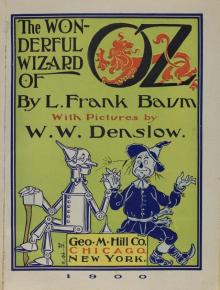 The Wonderful Wizard of Oz
The Wonderful Wizard of Oz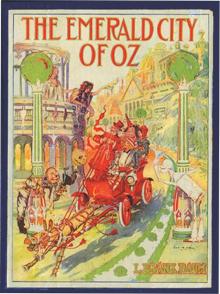 The Emerald City of Oz
The Emerald City of Oz The Story of Peter Pan, Retold from the fairy play by Sir James Barrie
The Story of Peter Pan, Retold from the fairy play by Sir James Barrie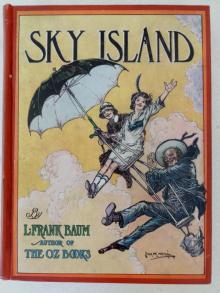 Sky Island
Sky Island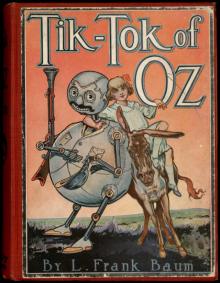 Tik-Tok of Oz
Tik-Tok of Oz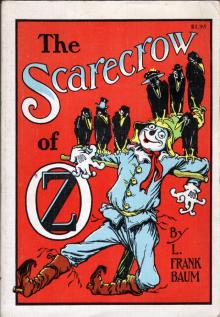 The Scarecrow of Oz
The Scarecrow of Oz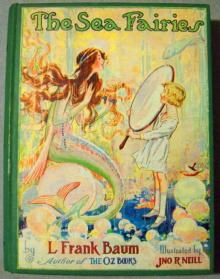 The Sea Fairies
The Sea Fairies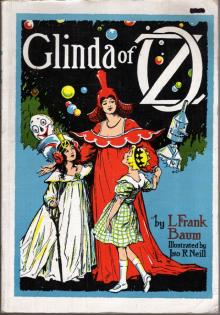 Glinda of Oz
Glinda of Oz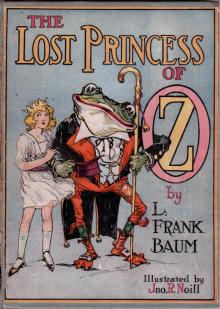 The Lost Princess of Oz
The Lost Princess of Oz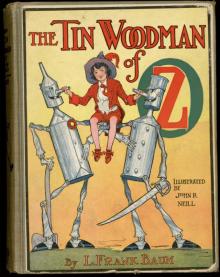 The Tin Woodman of Oz
The Tin Woodman of Oz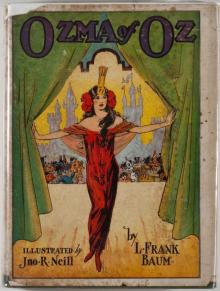 Ozma of Oz
Ozma of Oz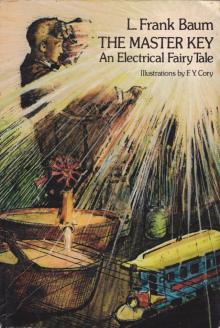 The Master Key
The Master Key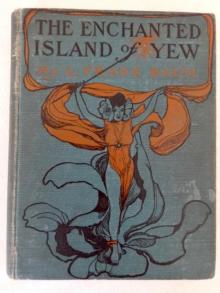 The Enchanted Island of Yew
The Enchanted Island of Yew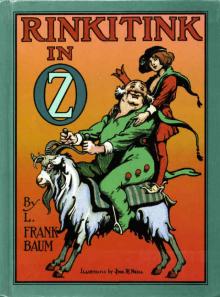 Rinkitink in Oz
Rinkitink in Oz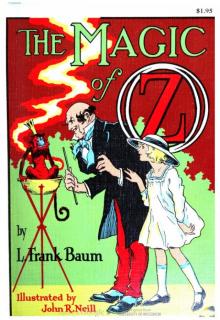 The Magic of Oz
The Magic of Oz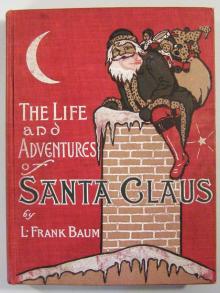 The Life and Adventures of Santa Claus
The Life and Adventures of Santa Claus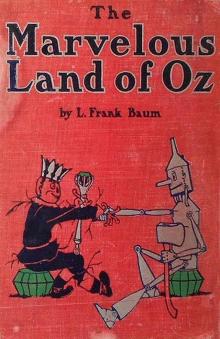 The Marvelous Land of Oz
The Marvelous Land of Oz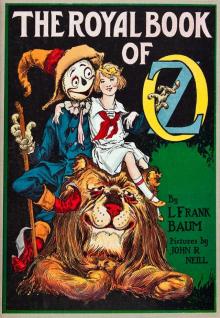 The Royal Book of Oz
The Royal Book of Oz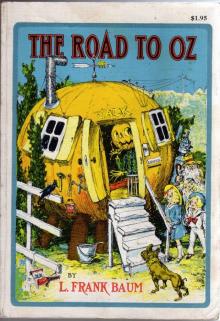 The Road to Oz
The Road to Oz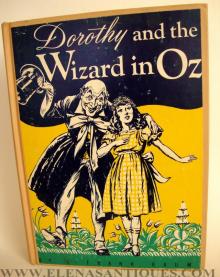 Dorothy and the Wizard in Oz
Dorothy and the Wizard in Oz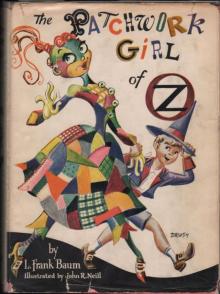 The Patchwork Girl of Oz
The Patchwork Girl of Oz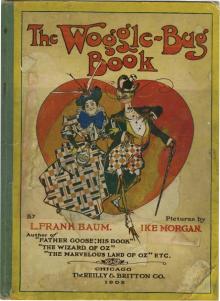 The Woggle-Bug Book
The Woggle-Bug Book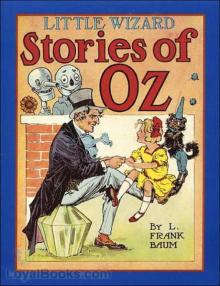 Little Wizard Stories of Oz
Little Wizard Stories of Oz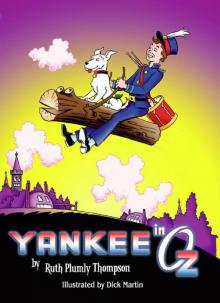 Yankee in Oz
Yankee in Oz Aunt Jane's Nieces and Uncle John
Aunt Jane's Nieces and Uncle John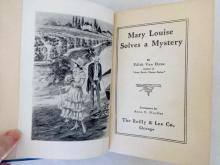 Mary Louise
Mary Louise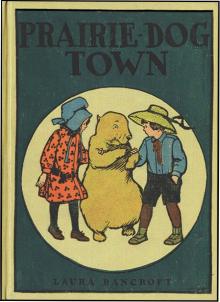 Prairie-Dog Town
Prairie-Dog Town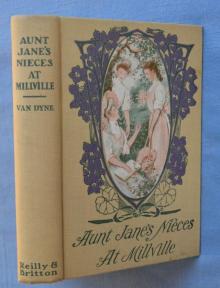 Aunt Jane's Nieces at Millville
Aunt Jane's Nieces at Millville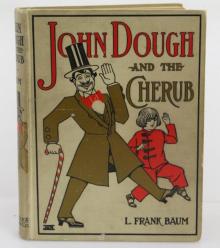 John Dough and the Cherub
John Dough and the Cherub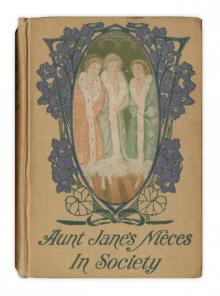 Aunt Jane's Nieces in Society
Aunt Jane's Nieces in Society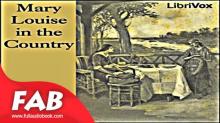 Mary Louise in the Country
Mary Louise in the Country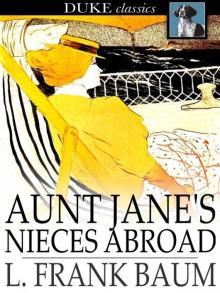 Aunt Jane's Nieces Abroad
Aunt Jane's Nieces Abroad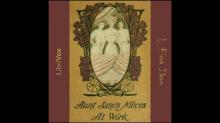 Aunt Jane's Nieces at Work
Aunt Jane's Nieces at Work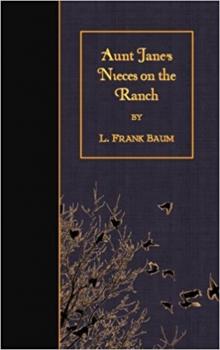 Aunt Jane's Nieces on the Ranch
Aunt Jane's Nieces on the Ranch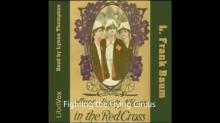 Aunt Jane's Nieces in the Red Cross
Aunt Jane's Nieces in the Red Cross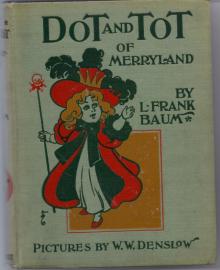 Dot and Tot of Merryland
Dot and Tot of Merryland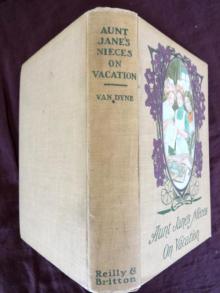 Aunt Jane's Nieces on Vacation
Aunt Jane's Nieces on Vacation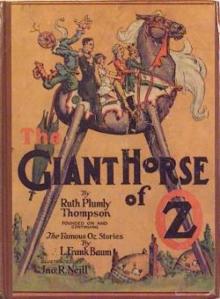 The Giant Horse Of Oz
The Giant Horse Of Oz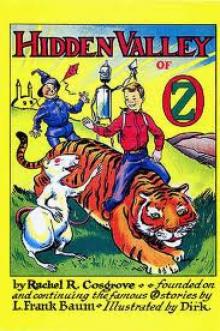 The Hidden Valley of Oz
The Hidden Valley of Oz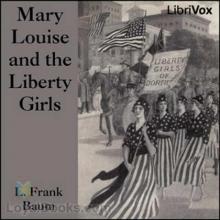 Mary Louise and the Liberty Girls
Mary Louise and the Liberty Girls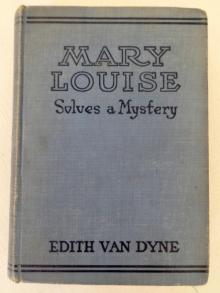 Mary Louise Solves a Mystery
Mary Louise Solves a Mystery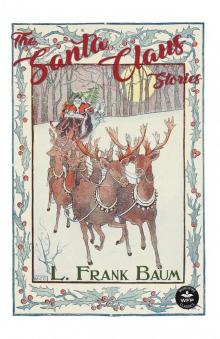 The Santa Claus Stories
The Santa Claus Stories Aunt Judith: The Story of a Loving Life
Aunt Judith: The Story of a Loving Life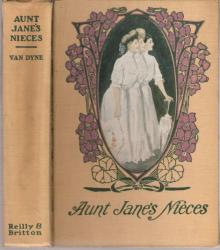 Aunt Jane's Nieces
Aunt Jane's Nieces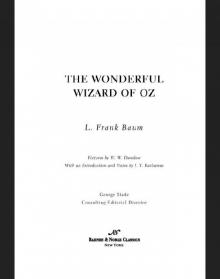 Wonderful Wizard of Oz (Barnes & Noble Classics Series)
Wonderful Wizard of Oz (Barnes & Noble Classics Series) Oz, The Complete Collection
Oz, The Complete Collection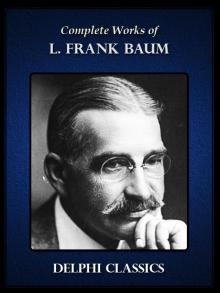 Complete Works of L. Frank Baum
Complete Works of L. Frank Baum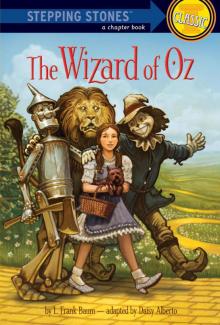 The Wizard of Oz
The Wizard of Oz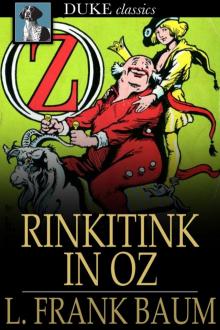 Oz 10 - Rinkitink in Oz
Oz 10 - Rinkitink in Oz